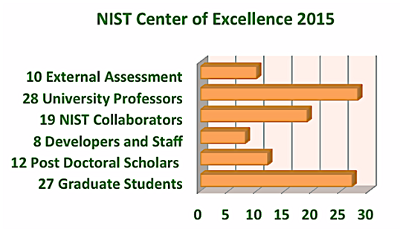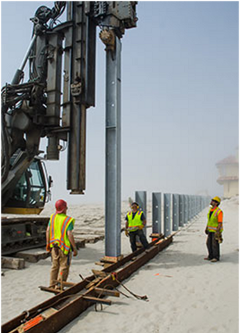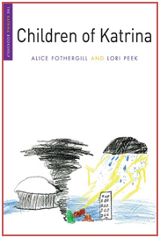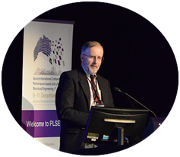
The CoE was funded in February, 2015. We look forward to the challenges over the next four years to identify the key components and attributes within communities that make them resilient to hazards, develop the NIST Community Resilience Modeling Environment (IN-CORE) to support risk-informed community resilience decisions, and to validate the IN-CORE architecture through selected case studies and hindcasts. Since the start of the CoE a number of organizational and structuring activities have taken place in Gaithersburg, MD, Fort Collins, CO, College Station, TX, Portland, OR, and Vancouver, B.C. By August 2015 the CoE was fully staffed with students, post-doctoral scholars, and budget and administrative staff; combined with almost 30 researchers, programmer/developers, and NIST collaborators, the CoE stands at over 90 participants.
The first year of the CoE focused on developing key communication mechanisms between Center engineers, sociologists, and economists to ensure that physical infrastructure and socio-economic systems within communities can be modeled with their interdependencies and to initiate the robust architecture of IN-CORE. IN-CORE will eventually be open source to allow users around the world to contribute and further improve upon the computational environment. In support of this goal, over 25 research tasks initiated in 2015 will continue in 2016 and another 4 to 6 will be phased in, eventually reaching a total of 42 research and development tasks by 2017. For a broader look at the task structure, personnel, and CoE thrusts and objectives we encourage you to look at the CoE webpage. Finally, we look forward to the opportunity to provide updates to the broader disaster resilience community over the next four years through the CRN.
 |
John W. van de Lindt, Ph.D., F. ASCE Co-Director jwv@engr.colostate.edu |
 |
Bruce R. Ellingwood, Ph.D., P.E., N.A.E Co-Director Bruce.Ellingwood@colostate.edu |
By J. Stein
An external assessment panel (EAP) to provide independent oversight and advice on CoE programs was formed last fall. The EAP will attend semi-annual meetings, collaborate with other EAP members, and provide a periodic assessment of the CoE programs and task updates. The EAP attended its forst semi-annual Center meeting at NIST on November 5-6, 2015. We are very excited to currently have ten members with an anticipated expansion of two to four new members in 2016. The CoE team would like to express their gratitude for our EAP members, listed below, and their donation of time and effort over the next several years as we work toward reaching important Center milestones.
EAP Members:
 |
 |
 |
 |
 |
| Glenn Bell Waltham, MA |
Bill Coulbourne Rehoboth Beach, DE |
Gary Chock Honolulu, HI |
Ann-Margaret Esnard Atlanta, Georgia |
Jim Harris Denver, CO |
 |
 |
 |
||
| Ifa Kashefi Los Angeles, CA |
Jamie Brown Kruse Greenville, NC |
Leon Kempner San Francisco, CA |
||
 |
 |
|||
| Patrick Otellin Vancouver, WA |
Havidan Rodriguez Edinburg, TX |
Chris Jones Durham, NC |
By B. Ellingwood and D. Cox
Center investigators are engaged in resilience modeling and assessment of two small communities. The purpose of these testbeds is multi-fold: to enable the fundamental algorithms in IN-CORE to be initiated, developed and tested at an early stage of the Center research program before the measurement methods, data ontology and databases for modeling physical and social infrastructure systems and networks have fully matured; to provide guidance to NCSA software developers as to the nature of the algorithms that will be incorporated into IN-CORE; and to build working models of collaboration in teams of engineers, social scientists and computer scientists early in the Center research endeavor, something that has been elusive in previous large research centers. These testbeds will test the modeling, linkages and inter-dependencies between simple representations of building inventories, bridges and transportation systems, utility systems and the socioeconomic systems within the community that they support, and will inform the subsequent development of algorithms to estimate impact and recovery trajectories of systems that are essential for community resilience. The Centerville and Seaside testbeds, along with a more complex model of Shelby County, TN that will be developed on the IN-CORE platform later in 2016, will inform the development of more refined community resilience assessment methods in subsequent years of the Center research program.
Centerville
Centerville is a virtual city that was designed to allow the Center investigators maximum flexibility in designing, testing and stressing their algorithms independently prior to the availability of a working version of IN-CORE. Centerville is envisioned as being a typical middle-class city with a reasonably diverse economy, which is situated in a Midwestern State and is susceptible to moderate to major seismic hazards as well as tornadoes. Thus, both earthquake and tornado hazards are considered in assessing the resilience of the Centerville community.
Seaside
The overall objective of this work is to use Seaside, OR, as a test site to develop multi-hazard damage and loss assessment at parcel scale for a range of earthquake/tsunami scenarios originating from the Cascadia Subduction Zone (CSZ) hazard. Seaside is a small coastal community with fewer than 6,000 residents, fewer than 10,000 buildings and simple topology in terms of networks for roads and other infrastructure. Because Seaside is an actual community and sits in geographic isolation to neighboring communities, it allows a practical application for IN-CORE development.
To learn more about the Centerville and Seaside Testbeds, please visit the Testbed Communities page of the website.
By B. Ellingwood
The National Institute of Standards and Technology (NIST) has formed a new Community Resilience Panel. The panel's launch is part of NIST's community resilience program, which recognizes that social and economic needs and functions should drive performance goals set for buildings and physical infrastructure systems. NIST convened the first meeting of this panel on November 9, 2015, at the institute's campus in Gaithersburg, MD Center investigators Bruce Ellingwood and Naiyu Wang were among the 160+ individuals who attended this first meeting. The Panel is a very broad-spectrum group, with both public and private sector representatives from the fields of engineering, public planning and policy, and public administration represented.
Key objectives for the panel include connecting and engaging stakeholders at all levels to identify policy and standards-related gaps and barriers; proposing innovative solutions to improve community resilience; and maintaining a central repository for guidance documents and practical tools to support community resilience planning and implementation. The new panel also will inform future versions of the Community Resilience Planning Guide for Buildings and Infrastructure Systems, which NIST issued in two volumes in October, 2015.
The morning was devoted to introducing the goals and objectives of the panel, including a keynote address, an open discussion on improving community resilience through stakeholder collaboration, and an introduction of the Panel Draft Charter and By-Laws. In the afternoon, the seven Standing Committees were launched: Buildings and Facilities; Communication; Data, Metrics and Tools; Energy; Social and Economic; Transportation; and Water and Wastewater. Naiyu Wang was elected Secretary of the Standing Committee on Data, Metrics and Tools, while Bruce Ellingwood is a member of Buildings and Facilities. Each of the Standard Committees was charged with developing an action plan and reporting back to the plenary at the end of the afternoon.
Panel membership is open to all interested participants. There are no membership fees. For more information on the Community Resilience Panel, and to access a membership form, go to http://www.CRPanel.org.

Construction of baffle walls on New York's Rockaway Beach following Hurricane Sandy. (View hi-resolution image)
Credit: ©K.C.Wilsey/FEMA
The National Institute of Standards and Technology (NIST) issued the Community Resilience Planning Guide for Buildings and Infrastructure Systems to help U.S. communities better withstand and rebound from the shocks of severe weather, earthquakes and other hazards.
Issued on the third anniversary of Hurricane Sandy, which killed 157 people in the United States and wreaked havoc and destruction from Maine to North Carolina, the new planning guide is aimed at community leaders in both the public and private sectors. It lays out a practical six-step process that communities can follow to develop resilience plans to help them prepare for hazards, adapt to changing conditions and withstand and rapidly recover from disruptions.
To access the guide, an FAQ, and an overview document called Guide at a Glance, go to http://www.nist.gov/el/resilience/guide.cfm.
To read a feature story on the planning guide and other complementary NIST community resilience efforts, go to http://www.nist.gov/el/helping-to-build-a-nation-of-resilient-communities.cfm.
By S. Pilkington
At the NIST COE for Risk Based Community Resilience Planning semi-annual meeting in November, the graduate students and post docs met with the goal of forming a Student Leadership Council in order to organize more involvement. Officials elected by those present at the meeting are as follows: Chair - Stephanie Pilkington, Colorado State University, Vice Chair - Hana Chmielewski, North Carolina State University & NIST, and Activities Director - Sushreyo Misra, Rice University. There is also an executive committee open to anyone who wishes to assist in planning and coordinating for the group.
 |
 |
 |
| Stephanie Pilkington Chair |
Hana Chmielewski Vice Chair |
Sushreyo Misra Activities Director |
For the Center's semi-annual meeting in April, the council is planning a poster competition, in which all graduate students and post docs are encouraged to participate. There will also be a happy hour offering an opportunity to interact in a relaxed environment. If you wish to be involved or have questions, please contact Stephanie Pilkington at Stephanie.Pilkington@colostate.edu.
By J.W. van de Lindt
The Center of Excellence focuses on a variety of hazards which are detailed in a new 92 page white paper edited by N. Attary and J.W. van de Lindt recently released to the CoE team for internal review. This document discussed state-of-the-art for nine different hazards, but more importantly it explains the initial treatment of hazards in the first version of IN-CORE. So, what hazards will be considered first by the team? There are three efforts currently underway with two more to follow soon:
Earthquakes: Scenario earthquakes were already embedded in the MAEViz/Ergo platform, which IN-CORE is being built onto, but a robust update to the 2014 Next Generation Attenuation equations is underway. In addition, the ability to include aftershock analysis is needed and under discussion. Although the concept of two successive earthquakes is simple, the software architecture required to extract response and damage information for components within a community's infrastructure will require substantive changes. To see an example of where earthquake hazard is being implemented within one of the resilience community testbeds, see Community Testbed article on Centerville, included in an earlier article of this newsletter.
Tornadoes: Scenario tornadoes are being included in IN-CORE, but the science is much less mature than earthquake analysis, in terms of both understanding and ability to model loads. IN-CORE analysts currently have the ability to select start and end points for the tornado path within a community. Estimated wind speed statistics from a database of more than 40,000 tornadoes is then used to assign wind speeds spatially within that path defined by the centerline of the tornado in order to to determine infrastructure responses. The hazards team is working with a full-scale tornado dataset provided by colleagues at Texas Tech University to identify pressure deficits in tornadoes and integrate these into the fragility methodology.
Tsunami: Tsunami scenarios are complex in that much is understood about the overload flow, but it is difficult to model because of complexities in the built environment and its interaction with the flow. Tsunami scenario modeling is being implemented in the second community resilience testbed, the town of Seaside, OR. For information on how tsunami scenario is being incorporated into IN-CORE see the Community Testbed article on Seaside, included in an earlier article of this newsletter.
THRUST 2 Workshop, February 11-12, Gaithersburg, MD
NIST CoE team members will be meeting at NIST in February with NHERI and NIST/Purdue teams to discuss standardization of data ontologies for resilience studies. Speakers will include Long Phan, Jong Lee, and John van de Lindt from the CoE. Also invited to speak: Ann-Christine Catlin from Purdue who is NIST's HUB guru and the lead developer of Chile Earthquake and Joplin Tornado data repositories; Santiago Pujol from Purdue who worked very closely with NIST to develop the data ontology for categorizing Joplin and Moore tornadoes, and also Chile earthquake photographs, will speak on standardizing data ontology for multiple hazards; Maria Esteva of Texas Advanced Computing Center and Natural Hazards Engineering Research Infrastructure, where her role involves developing scientific data collections, implementing digital archiving and preservation strategies for scientific data-sets, and the use of information visualization as a tool for archival processing.
Climate Change and Its Impact: Risks and Inequalities, March 10-11, Champaign, IL
Keynote speaker is Ms. Mary Robinson, former President of Ireland, former UN High Commissioner for Human Rights, and current UN Special Envoy for Climate Change.
Workshop goal is to develop a better understanding of the ways that climate change is affecting society by altering weather patterns, modifying the likelihoods and magnitudes of natural hazards, and exacerbating inequalities as well as creating new inequalities among individuals around the world. Learn more at the website: http://mae.cee.illinois.edu/ClimateChange/
Other Upcoming Meetings, Conferences, and Workshops of Interest:
- Geotechnical & Structural Engineering Congress, February 14-17, Phoenix, AZ
- National Tornado Summit, March 1-2, Oklahoma City, OK
- Engineering Mechanics Institute, May 22-25, Nashville, TN. Paolo Gardoni will be organizing sessions dealing with resilience.
- 12th International Conference on Structural Safety and Reliability, August, 2017, Vienna - abstracts for organized sessions and mini-symposia will be due March 15th.
Lori Peek, NIST-CoE team member and Associate Professor of Sociology at Colorado State University is one of four invited scholars who will be participating in the National Socio-Environmental Synthesis Center (SESYNC) post-doctoral immersion program at the University of Maryland.

Dr. Peek also recently co-authored a book which was published in 2015. Children of Katrina is one of the only long-term, multi-year studies of young people and how they experience disasters.
"This book is beautifully written and highly engaging. Fothergill and Peek offer new concepts regarding recovery from disasters and rich interview data based on groundbreaking team ethnography. The scholarship is sound and exemplary."
-- William Corsaro, author of The Sociology of Childhood and We're Friends, Right? Inside Kids' Culture.
In November of 2015, Dr. Peek delivered an honorary lecture as part of the Risk and Vulnerability lecture series at the University of Vienna in Austria. This lecture series includes scholars noted internationally for their work on risk, vulnerability, hazards, and disasters.
In October, CoE Co-director John van de Lindt traveled to Singpore for the Asia Pacific Homeland Security 2015 conference. His keynote lecture was titled The Science Behind Modeling Community Disaster Resilience. Learn more about the APHS Conference.

CoE Co-director Bruce Ellingwood gave a Keynote Lecture in December at the Second International Conference on Performance-based and Life-cycle Structural Engineering (PLSE 2015) in Brisbane, Australia. His lecture title was Performance-Based Engineering For Multiple Hazards: The Role Of Structural Reliability And Risk Assessment. It can be found in the PLSE Conference Proceedings download.
CoE Team: Jamie Padgett, Suren Chen,Scott Douglass, Bret Webb, Dan Cox, Andre Barbosa, Francisco Aguiniga, Amy Cerato, Charles Nicholson, Naiyu Wang, Giannis Gidaris, Weili Zhang, Sushreyo Misra, Yangyang Wu, Hou Guangyang.
Transportation networks are comprised of a variety of individual constituent components such as highway bridges, roadways, railway bridges, railroads and tunnels. As spatially distributed systems, these networks are of paramount importance for the proper and smooth functioning of societies and economies. Natural hazards such as earthquakes, hurricanes, floods, and tsunamis can cause severe disruptions to these systems impairing their functionality. These compromising effects can severely impact the emergency response and ultimately the socio-economic recovery of extended regions. Establishment of comprehensive risk and resilience assessment frameworks for transportation systems, subjected to various hazards occurring independently of each other or in a concurrent/cascading manner, can facilitate pre- and post-hazard event mitigation and emergency response strategies. Development of such frameworks requires: (i) probabilistic quantification of possible damage levels that constituent components suffer when exposed to a range of hazards through fragility models, (ii) mapping the vulnerability of the components to appropriate recovery patterns to quantify restoration times and ultimately resilience using restoration models, and (iii) combining vulnerability and recovery information to support performance assessment of the transportation system in terms of network level metrics of risk and resilience.
In this process described above, several analysis tools are necessary. In particular, fragility and restoration models are required for the first and second stage, respectively. Finally the third stage necessitates appropriate network risk assessment methodologies and performance metrics that are able to inform interdependencies, socio-economic impacts and community resilience. Therefore, this task aims to provide methods and models that support and enable resilience assessment of transportation systems within the IN-CORE computational environment. In particular, the task objectives are to: (i) develop/identify fragility and restoration models for transportation network components under a range of hazards, (ii) provide a methodology for network level performance modeling, (iii) develop and implement methods for transportation network risk quantification and evaluation of network performance metrics that facilitate community resilience assessment, and (iv) support IN-CORE developers in implementing relevant models.
Research efforts are aimed at achieving the task's objectives include a state-of-the-art review of fragility and restoration models for all the constituent components of a transportation network subjected to different natural hazards and the development of a resilience analysis framework for roadway networks. The hazards of interest in the fragility and restoration modeling survey are (i) earthquake, (ii) riverine flood, (iii) tornado, (iv) wind, (v) hurricane induced surge and waves, (vi) wildfire, (vii) tsunami, and (viii) landslide. The review emphasizes models that are viable for analysis of regional portfolios or transportation networks as opposed to individual structures. The roadway network resilience analysis framework focuses on three primary features. The first involves modeling of traffic flow in transportation systems. The second feature focuses on definition and identification of a set of performance metrics to support evaluation of resilience for transportation networks in multiple dimensions. These metrics can be used individually and collectively to facilitate performance and resilience quantification of transportation networks as well as to support mitigation decisions and recovery strategies. Finally, the third feature corresponds to establishment of a methodology to interface transportation networks with social-economic systems such that the impact of natural hazards to a community is expressed in terms of social consequences and economic losses.
Figure 1 illustrates characteristic fragility models for highway bridges subjected to seismic and hurricane hazards. In particular, part (a) presents a parameterized seismic fragility model as a function of span length and peak earthquake ground acceleration (PGA). Part (b) presents a parameterized hurricane-induced coastal flood fragility model as a function of surge and wave height corresponding to the hurricane IMs.
Figure 2 presents a schematic for the road network of the Centerville virtual community testbed, which is being used to test the linkages between physical, economic and social resilience assessment models. Different colors of the various roadways of the network indicate different levels of traffic flow prior to the occurrence of a natural disaster.

Figure 1. Parameterized (a) seismic bridge fragility as a function of span length and PGA, and (b) hurricane bridge fragility as a function of surge and wave height.

Figure 2. Road network of the virtual community of Centerville. Different colors of the roads indicate traffic flow in vehicles per day according to the color map.
